Cherished 535 grams: how Olympic medals are made
Categories: Production | Sport
By Pictolic https://pictolic.com/article/cherished-535-grams-how-olympic-medals-are-made.htmlThere are 218 days left before the Winter Olympic Games in Sochi, and the production of Olympic medals at the Adamas jewelry factory in Moscow is in full swing. In total, 1,300 gold, silver and bronze medals will be made, which should take at least three kilograms of 999 gold, two tons of 960 silver and 700 kilograms of bronze. Such a noticeable difference in the amount of precious metals used is due to the fact that the "gold" medals are not actually gold, but gilded - they are made of silver and then covered with 6 grams of gold.
(Total 13 photos)
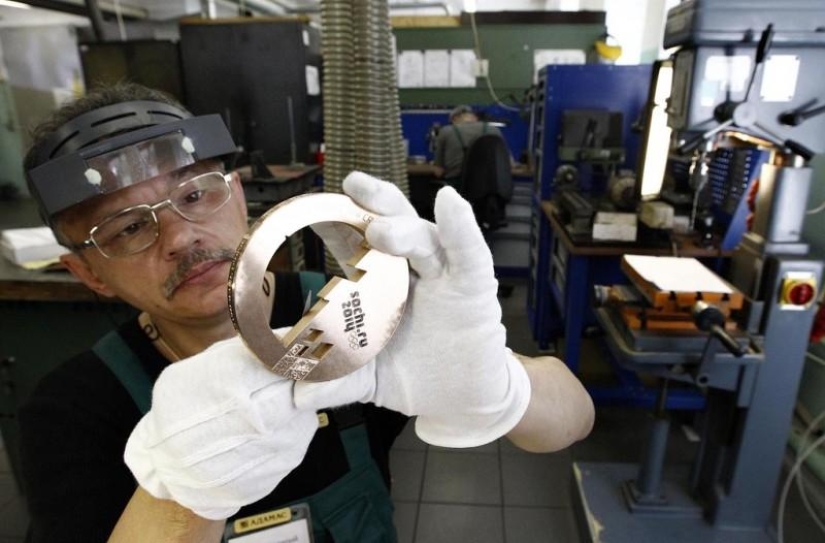
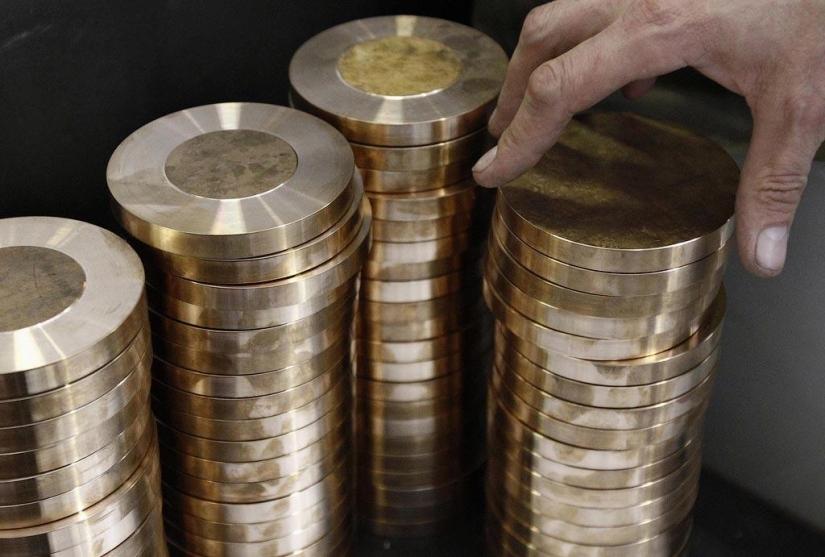
1. At the Adamas jewelry factory in Moscow, the production of medals for the Olympic Games in Sochi in 2014 is in full swing. A total of 1300 gold, silver and bronze medals will be made. In the photo: Preparations of bronze and silver medals at the Adamas plant in Moscow, June 28, 2013.
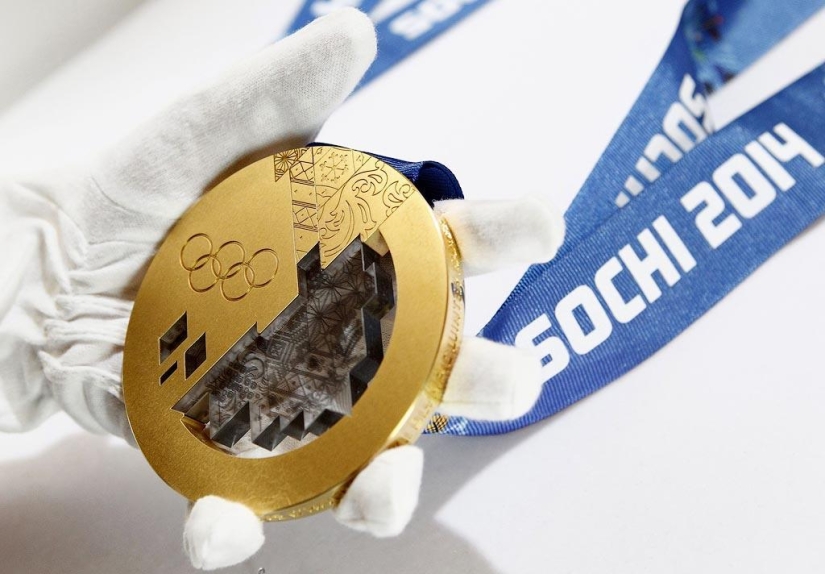
2. Gold Olympic medal at the Adamas plant in Moscow. Olympic gold medals are made of 960 silver (525 grams) and then plated with gold (at least 6 grams of 999 as specified by the IOC standards). Silver ones are made of silver and weigh 525 grams, bronze ones are made of bronze (460 grams).
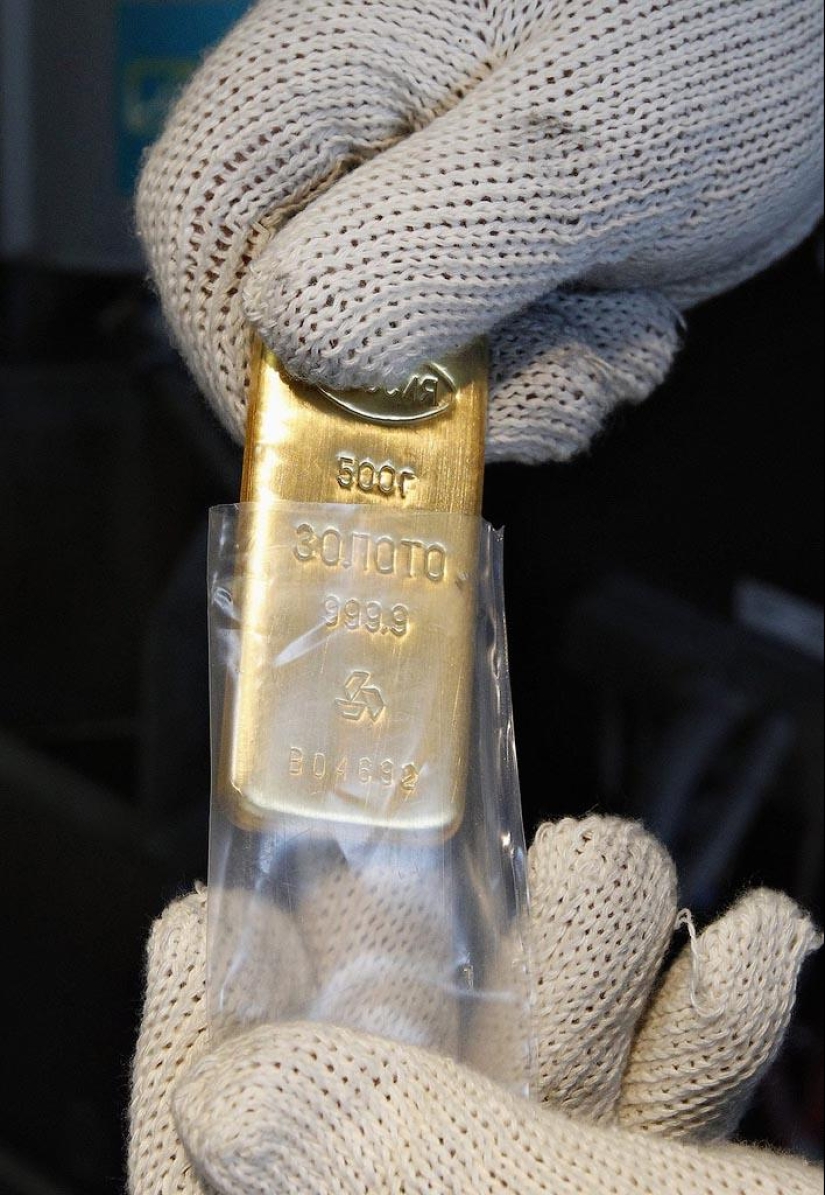
3. A worker pulls out a gold bar for making an Olympic gold medal at the Adamas factory.
All materials used for the needs of the Olympic Games were obtained in Russia, and the sets of awards themselves are made exclusively by Russian specialists.
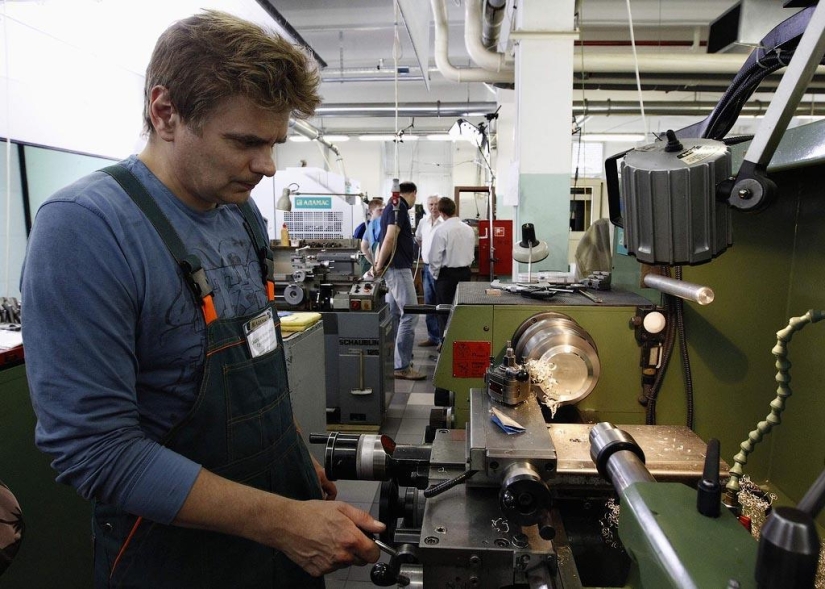
4. Worker on the machine is working on a bronze Olympic medal. Medals are produced in a separate workshop; there, medals go through all the stages of production - from cutting out a round blank to final polishing. The technological process for each medal consists of 25 stages. Most of them are associated with the processing of a metal workpiece (more than 20 operations), and the rest - with the processing of polycarbonate (an insert in the form of a patchwork quilt is made from it - one of the symbols of the 2014 Olympics).
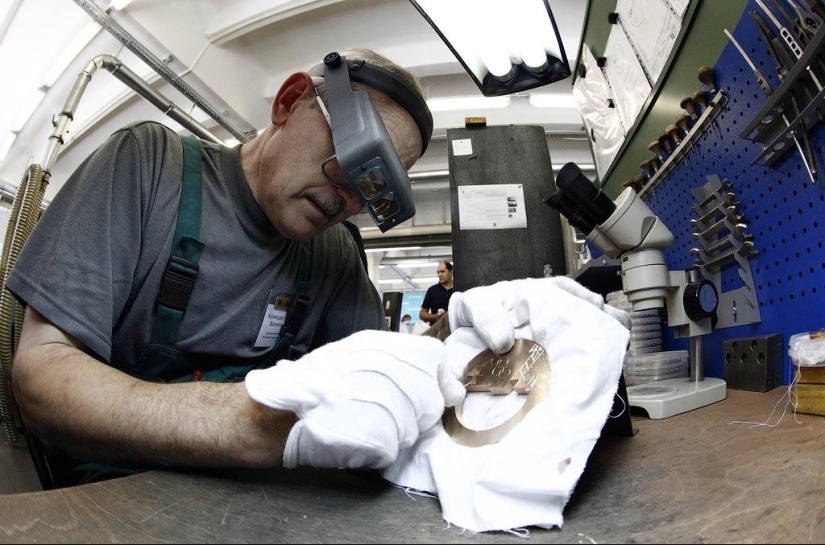
5. The production of a medal begins with casting, rolling and cutting of a blank, as a result of which metal squares of silver or bronze (depending on the value of the medal) come out with dimensions of 12 by 12 cm and a thickness of 12 mm. Then, on a modern lathe, a round blank with a diameter of 10 cm is cut out of the square.
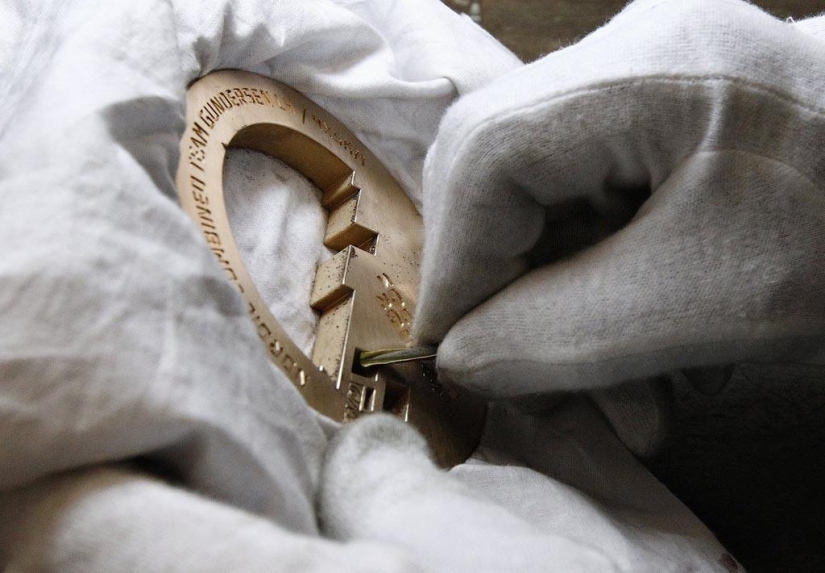
6. Work on the Olympic silver medal at the Adamas plant.
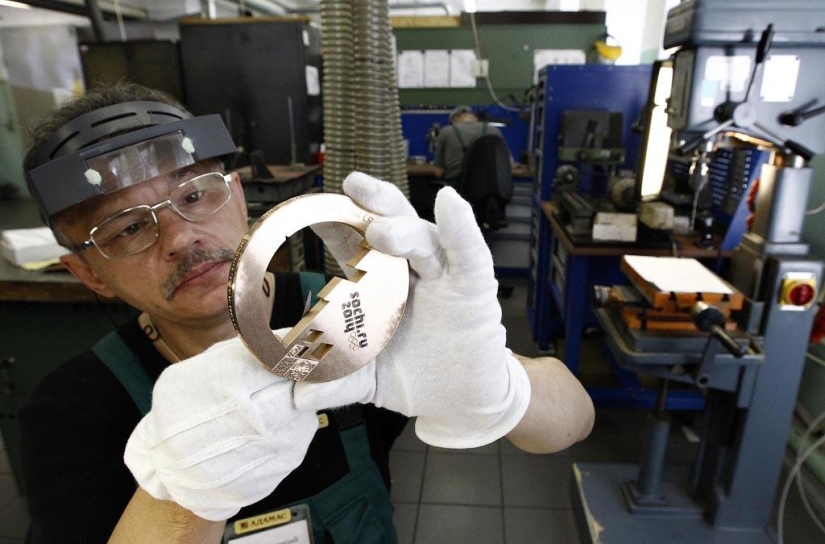
7. Then the blank is sent for milling, where patterns, symbols of the Olympics, names of disciplines are applied. Using the high-speed milling method, a pocket is prepared for fastening the tape.
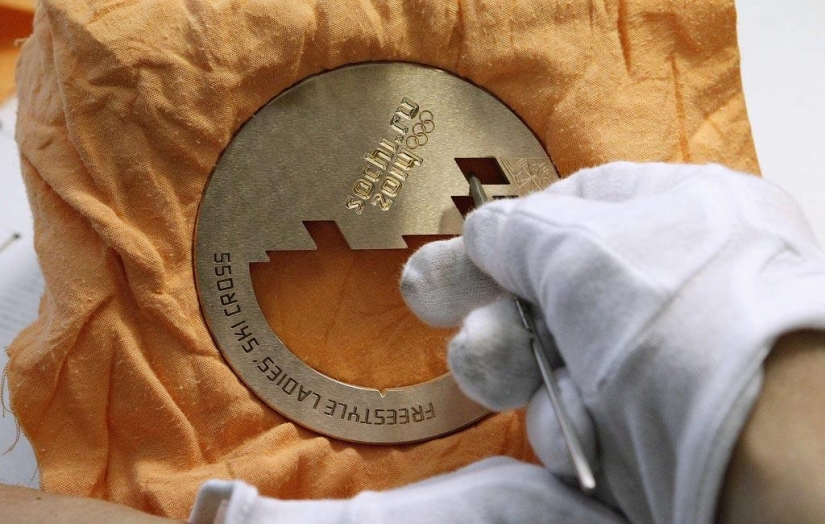
8. Windows are then cut into the medal, into which the polycarbonate crystals will be placed. After that, the award is polished and washed several times - until the final look is obtained.
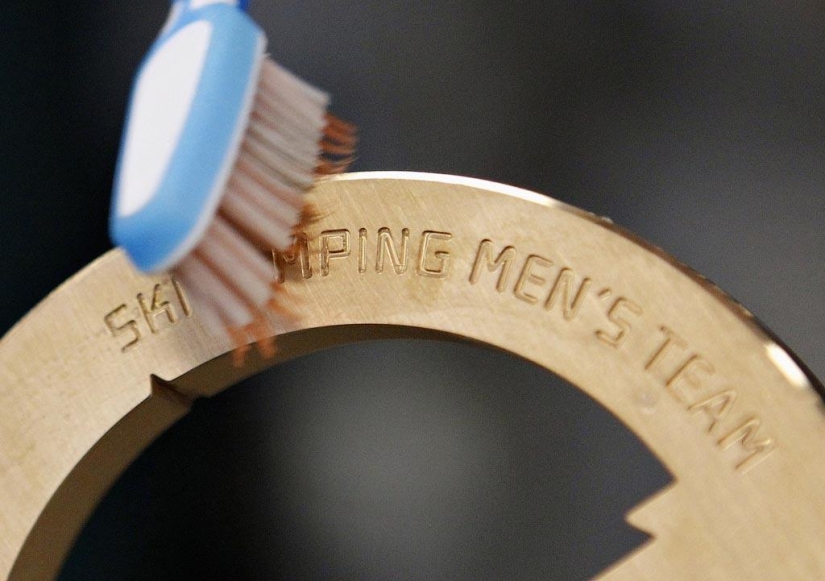
9. A worker uses a brush to clean the bronze medal.
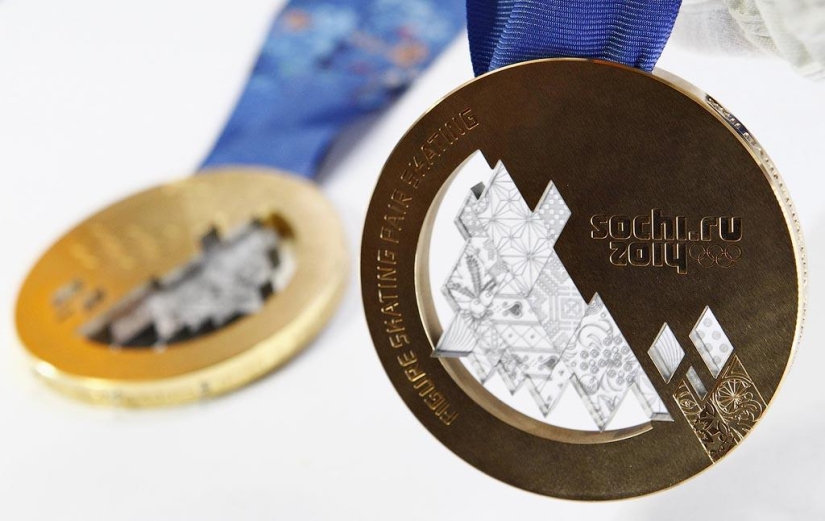
10. Gold (left) and bronze Olympic medal at the Adamas plant in Moscow.
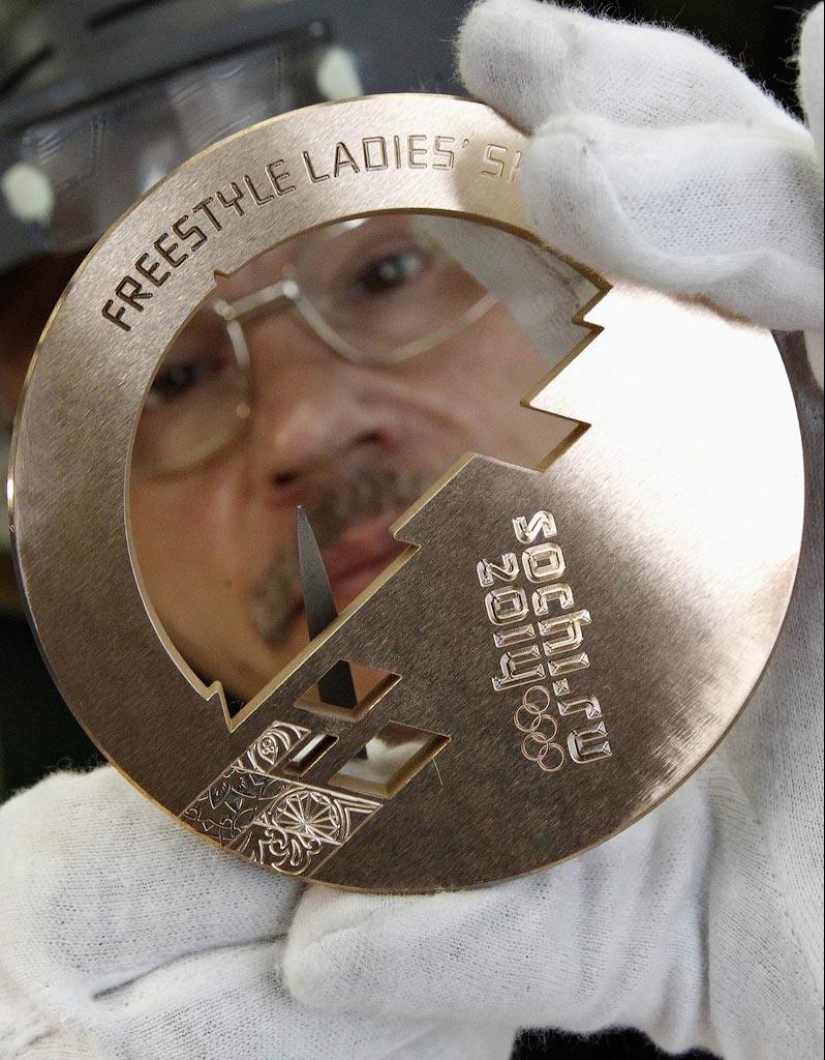
11. One of the main stages in the manufacture of medals is the insertion of polycarbonate elements into the metal part, which is a piece of the “Sochi-2014 patchwork quilt”. They are joined due to the special precision of manufacturing parts. Size matching is measured in hundredths and thousandths of a micron. To do this, the polycarbonate is strongly cooled and inserted into the medal case. Then it heats up and, due to the temperature difference, the elements expand and their mutual fixation occurs. That is why polycarbonate was chosen as the insert material, not glass. The reliability of the polymer is much higher, in addition, it does not need to be glued.
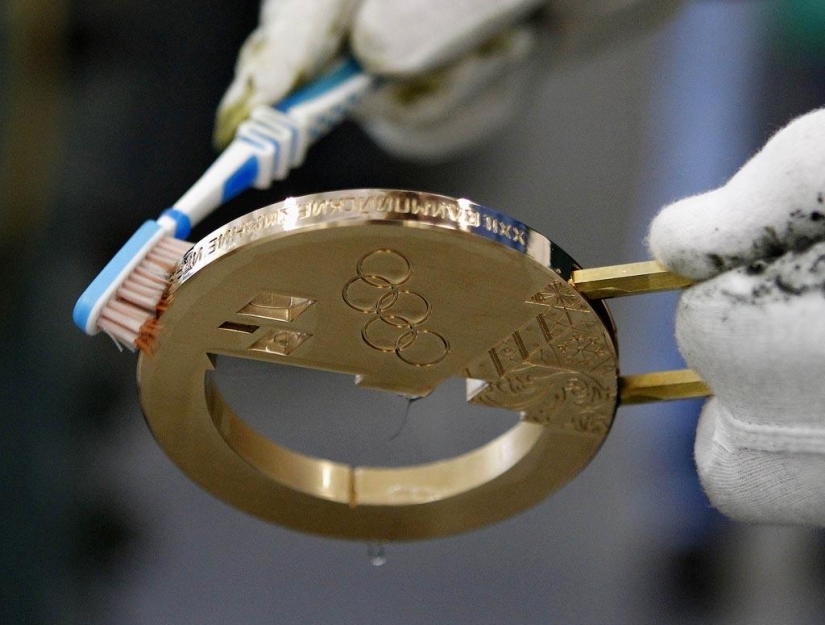
12. Full production cycle of one medal of any value - 18 hours. It takes 20 hours to make an award for the Paralympic Games, as there are processes that a regular medal does not have. For example, applying Braille, which is necessary for visually impaired and blind athletes.
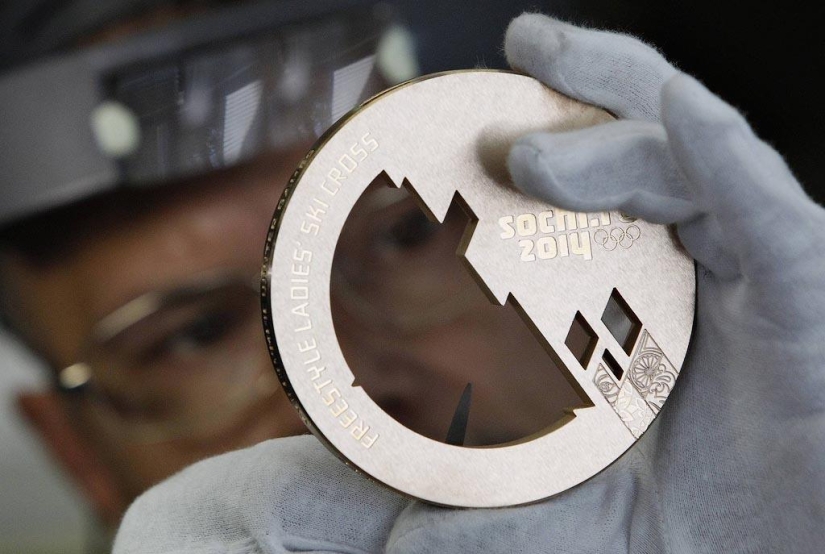
13. The factory promises that these medals will survive everything - the joyful bites of the winners, swimming in champagne, accidental falls on the asphalt from a great height, and even throws against the wall, if the awards turn out to be not of the dignity that their owners expected.
Keywords: Medals | Olympiad | Sochi | Jewelry
Post News ArticleRecent articles

The animal kingdom can be cruel and dangerous. So what should small and non-fanged animals do to protect themselves, or the same ...

Immunity to poisons at all times been the dream of all authority. List of popes, kings and emperors, gave his soul to God through ...
Related articles

On October 29, the main Olympic countdown began - now there are less than 100 days left before the winter games in Sochi. At the ...

A total of 108 Persian (Near Asian) leopards are now in zoos around the world. Leopard Thunder is not even a year old yet, but he ...

Reuters photographer Thomas Peter spent some time in Sochi's Caucasian community as the city prepared for the 2014 Winter ...

The primary mission of any doctor is to save lives and help those afflicted by illness. Unfortunately, history is replete with ...